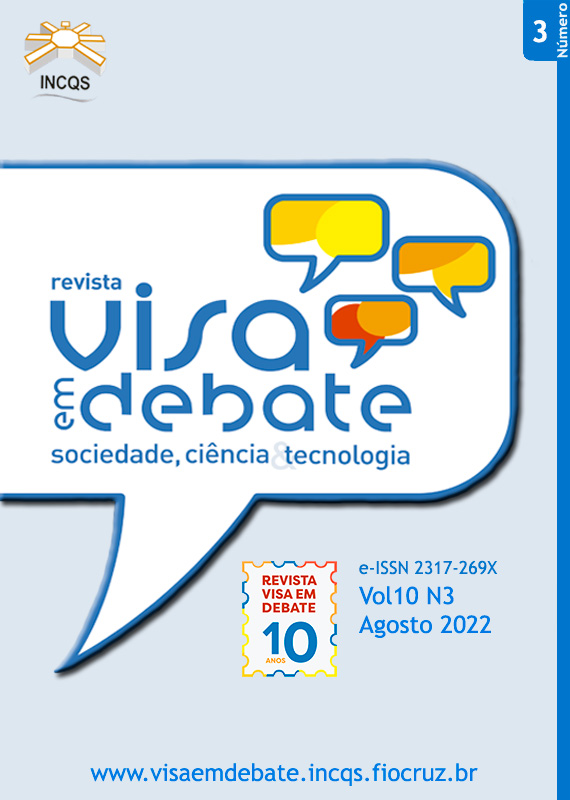The manifestations of the second victim of an adverse event: an analysis of nursing professionals from a public hospital in Minas Gerais
DOI:
https://doi.org/10.22239/2317-269x.01976Keywords:
Adverse Event, Occupational Safety, NursingAbstract
Introduction: Health care can result in adverse events that directly affect patients’ health and their experience in health care, and can cause deaths, permanent and temporary sequelae, psychological distress to patients, their families and health professionals, in addition to raising costs of medical assistance services. Among the ills related to the occurrence of adverse events are the losses suffered by health professionals who are involved in an adverse event, referred to in the literature as “second victim”. These individuals experience profound psychological effects, such as anger, guilt, inadequacy, depression, and suicide, due to real or perceived flaws. Objective: to identify the manifestations, in the face of the occurrence of an adverse event, of nursing professionals in a hospital and their relationship with the phenomenon of the second victim. Method: a cross-sectional and explanatory study was carried out, using quantitative methods. The instrument used was the Hospital Survey on Patient Safety Culture questionnaire (HSOPSC). Questions to define the population profile and to characterize adverse events based on the Notivisa adverse event notification system of Anvisa (National Health Surveillance Agency) were added. The population consisted of 203 nursing professionals involved in direct assistance to patients at a general, public hospital, of high relevance for the care of the population of the northwest region of Minas Gerais. Results: The sample was predominantly female (85%), with an average age of 40.7 years, with 74% nursing technicians, 25% nurses and 1% nursing assistants. 60% (n. 119) of the professionals reported to have been involved in at least 1 adverse event in the last 2 years. Of these, the majority were with slight damage (47%) and without damage (24%). They also reported that 75% of the events were notified to the Risk Center. Most professionals (55%) who were involved in an adverse event presented at least one type of physical and/or psychological manifestation. Anxiety was the most reported manifestation (24%). If we consider the cases in which the adverse event caused moderate, severe or death damage (n. 36), only 22% of the professionals were indifferent; other professionals showed anxiety (33%), irritation (25%), insomnia (5%), loss of appetite (5%), difficulty in returning to routine (5%) and other experiences (28%), worry, frustration, fear, indignation and greater attention at work. Three professionals (3%) reported that they needed to seek specialized emotional assistance. Conclusions: The results of this study, in accordance with what the literature on this issue presents, demonstrate how harmful and impactful for a health professional can be the experience of the phenomenon of the second victim. These effects can be aggravated if a culture of punishment and reprimand for failures prevails in the health Institution.
Downloads
Downloads
Published
Issue
Section
License
Copyright (c) 2022 Priscila Portes Almeida, Gerusa Gonçalves Moura

This work is licensed under a Creative Commons Attribution 4.0 International License.
COPYRIGHT ALLOWANCE The author (s) hereinafter designated as the ASSIGNOR hereby assign and transfer, free of charge, the ownership of the copyrights related to this ARTICLE to the Vigilância Sanitária em Debate: Sociedade, Ciência & Tecnologia (Health Surveillance under Debate: Society, Science & Technology) – Visa em Debate, represented by FUNDAÇÃO OSWALDO CRUZ, established at Av. Brasil, nº 4365, Manguinhos, Rio de Janeiro, RJ, Brazil, CEP 21045-900, under the conditions set out below: (a) The terms and conditions set forth in this Agreement shall apply to the following: 1. The ASSIGNOR declares that they s(he) is (are) the author (s) and owner (s) of the copyrighted property of the ARTICLE submitted. 2. The ASSIGNOR declares that the ARTICLE does not infringe the copyrights and / or other property rights of third parties, that the disclosure of images (if any) has been authorized and that they s(he) assume(s) full moral and / or property liability for its content, before third parties. 3. THE ASSIGNOR assigns and transfers all copyrights relating to the ARTICLE to the ASSIGNEE, especially the rights of editing, publication, translation into another language and reproduction by any process or technique. The ASSIGNEE becomes the exclusive owner of the rights related to the ARTICLE, and any reproduction, totally or partially, is prohibited in any other means of publicity, printed or electronic, without prior written authorization from the ASSIGNEE. 4. The assignment is free and, therefore, there will be no remuneration for the use of the ARTICLE by the ASSIGNEE.







